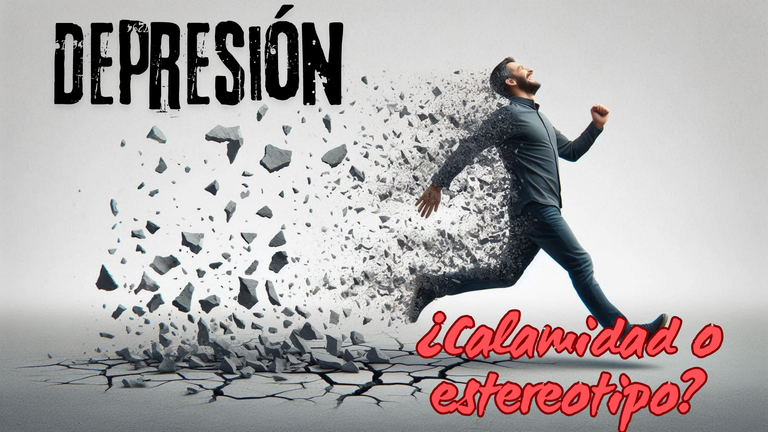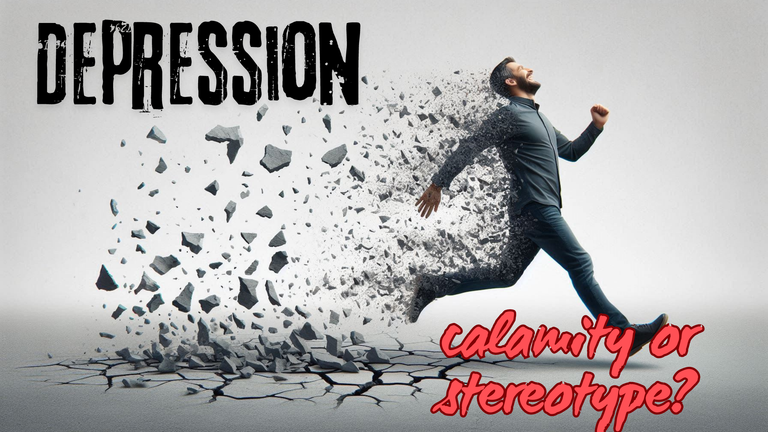
En el campo de la salud mental existen muchos estereotipos y prejuicios asociados a las personas que padecen de algún trastorno o condición asociada. Todo ello ha sido consecuencia de años y años de rechazo y discriminación hacia estas personas, pero dicha discriminación tenía un objetivo claro: establecer una frontera de lo normal y lo patológico.
Sin embargo, si nos preguntamos qué es lo normal, si bien nos resulta bastante ambigua pensar en una definición, fácilmente caeremos en asociar normalidad con lo común, con lo que estamos acostumbrados a ver en nuestra cotidianidad. Efectivamente, la normalidad generalmente se asocia a lo normalizado, y aunque esto pudiese parecer una redundancia, lo normalizado es aquello que ha sido resultado de un convenio social tácito. Esto quiere decir que lo «normal» difícilmente tenga un criterio objetivo, sino que más bien responde a lo que una sociedad, en dependencia de sus intereses, clasifica como tal mientras excluye lo que no lo es, con el fin de mantener una homeostasis, lo que le llamamos el status quo.
En ese sentido se puede pensar a la depresión clínica, y le pongo ese apellido porque muchas veces se suele hablar de la depresión indistintamente para referirse a los estados de tristeza o malestar que se pueda experimentar puntualmente frente a un acontecimiento cotidiano o contingencia. Cuando pensamos en alguien deprimido nos viene a la mente una persona triste, solitaria en un cuarto oscuro, llorando y enrollada en sábanas; y en seguida asociamos fracaso, sufrimiento, aislamiento y sepetecientas calamidades más que, si bien no tienen por qué ser así, es la representación que se encuentra generalizada en el imaginario popular.
Sin embargo, ¿cuántos casos conocemos de personas que nos parecían el símbolo de la felicidad y el éxito, y que un día cualquiera, de un momento para otro, deciden terminar con su vida y en las noticias leemos sobre años de lucha contra la depresión? Entonces, ¿cómo es posible que sigamos pensando que alguien con depresión es alguien sumido absolutamente en la tristeza más profunda?
Pasa que todo esto es producto de un estereotipo que existe en torno a la depresión y a la salud mental en general, debido a que por mucho tiempo hablar de estos temas era tabú, y la persona que atravesaba por algún proceso psicoterapéutico o simplemente que iba al profesional psi, se solía asociar con locura, desviación moral o posesión demoníaca, o simplemente debilidad personal. Todo ello condicionado por la falta de información y de educación al respecto de estos temas, que a su vez dio pie a una representación mediática distorsionada de la realidad de estas personas. Además, es bastante conocido que la cultura occidental históricamente constituida sobre valores patriarcales, excluía todo lo que pudiese ser asociado a debilidad, y de ahí que también las personas se privasen de acceder a una atención especializada, por demás, precaria.
Y por si fuese poco, todo ello dio al traste con un período de auge de la hospitalización y la reclusión en manicomios ubicado desde el siglo XVIII y XIX y parte del XX, en el que las sociedades estigmatizaban a las personas con problemas mentales por ser salvajes, irracionales, peligrosas para una cultura moral que temía lo diferente por verlo como una amenaza. Y con el auge del modelo biomédico y la psiquiatría específicamente, se afianzó la idea que los enfermos mentales debían ser atendidos en instituciones especializadas bajo supervisión médica.

Volviendo sobre la depresión, a día de hoy, a pesar de que existe mayor concientización y sensibilidad al respecto de la salud mental, y mayor acceso a recursos y tratamientos psicoterapéuticos, vemos que sigue existiendo el estereotipo del que antes hablábamos. Incluso cuando ya no se pueda hablar de que la depresión sea privativa de personas que se aíslan y fracasan en sus vidas, sino que también puede afectar a personas altamente funcionales y socialmente exitosas. Sobre este tema ya escribí en un artículo anterior, en el que abordo el tema de la llamada depresión de alto funcionamiento.
Lo cierto es que la depresión no tiene cara, no tiene lugar, no distingue entre personas fuertes y débiles. La depresión incluso en ocasiones es difícil detectarla precisamente porque la persona que la sufre forma parte de la sociedad y es víctima del estereotipo que la hace ocultar su padecimiento, además de que muchas veces se trata de una persona, como ya decía, funcional. La depresión no va de apariencias; hay personas de lágrima fácil o muy melancólicas que no están deprimidas, y las hay muy alegres y funcionales que cargan con todo su peso en silencio. La depresión va de un malestar que es vivido de manera diferente para cada uno de nosotros y nosotras.
Es necesario separarnos de la idea distorsionada de lo que es padecer un trastorno mental, y de nuestro lugar privilegiado desde donde juzgamos sin pensar en la realidad de cada cual y lo que diariamente tiene que enfrentar. Después de todo, nadie, excepto cada uno de nosotros y nosotras, sabe la intensidad de nuestros malestares.
English version

In the field of mental health, there are many stereotypes and prejudices associated with people who suffer from a disorder or related condition. All of this has been the result of years and years of rejection and discrimination towards these individuals, but such discrimination had a clear objective: to establish a boundary between what is normal and what is pathological.
However, if we ask ourselves what is normal, while it is quite ambiguous to think of a definition, we easily tend to associate normality with the common, with what we are accustomed to seeing in our daily lives. Indeed, normality is generally associated with what has been normalized, and although this might seem redundant, what is normalized is the result of a tacit social agreement. This means that the concept of "normal" is unlikely to have an objective criterion; instead, it responds to what a society, depending on its interests, classifies as such while excluding what does not fit, in order to maintain homeostasis—what we call the status quo.
In this sense, we can think about clinical depression, and I add that qualifier because depression is often mentioned interchangeably when referring to states of sadness or discomfort that may be experienced in response to a common event or contingency. When we think of someone who is depressed, we imagine a sad person, alone in a dark room, crying and wrapped in blankets; and immediately, we associate it with failure, suffering, isolation, and countless calamities that, while not necessarily true, are the representation ingrained in popular imagination.
However, how many cases do we know of people who seemed to us the symbol of happiness and success, who one day, suddenly, decide to end their lives, and we read in the news about years of struggle with depression? So, how is it possible that we continue to think that someone with depression is someone entirely consumed by the deepest sadness?
The truth is, this is all the product of a stereotype surrounding depression and mental health in general. For a long time, talking about these topics was taboo, and a person undergoing psychotherapy or simply visiting a mental health professional was often associated with madness, moral deviation, demonic possession, or just personal weakness. All of this was conditioned by the lack of information and education on these issues, which in turn led to a distorted media representation of the reality of these individuals. Moreover, it is well known that Western culture, historically built on patriarchal values, excluded anything that could be associated with weakness, leading people to refrain from accessing specialized care, which was, in any case, scarce.
To make matters worse, this also led to a period of widespread hospitalization and institutionalization in asylums, spanning from the 18th and 19th centuries into part of the 20th. During this period, societies stigmatized people with mental health issues as wild, irrational, dangerous to a moral culture that feared difference, viewing it as a threat. With the rise of the biomedical model and psychiatry in particular, the idea took root that people with mental illnesses had to be treated in specialized institutions under medical supervision.

Returning to the subject of depression, today, although there is greater awareness and sensitivity regarding mental health, as well as increased access to psychotherapeutic resources and treatments, the stereotype we mentioned earlier still persists. Even when we can no longer say that depression is exclusive to people who isolate themselves and fail in their lives, but it can also affect highly functional and socially successful individuals. I addressed this topic in a previous article, where I discussed what is known as high-functioning depression.
The truth is that depression has no face, no place, and it does not distinguish between the strong and the weak. Depression is often hard to detect precisely because the person suffering from it is part of society and is a victim of the stereotype that makes them hide their condition. Many times, as I mentioned earlier, it involves a person who is functional. Depression is not about appearances; there are people who cry easily or are very melancholic but are not depressed, and there are very cheerful and functional people who carry their burden in silence. Depression is about discomfort that is experienced differently by each of us.
We must distance ourselves from the distorted idea of what it means to suffer from a mental disorder, and from our privileged position from which we judge without considering each person’s reality and what they have to face on a daily basis. After all, no one, except each of us, knows the intensity of our own struggles.

Créditos | Credits
Imágenes utilizadas | Images used
Todas las imágenes utilizadas son de mi propiedad y fueron generadas utilizando Designer de Copilot y editadas en Canva | All images used are my own property and were generated using Designer from Copilot and were edited using Canva.
Traducción | Translation
Te puede interesar | You may be interested in
Las identificaciones como armas de doble filo | Identification as double-edged weapons [ES/EN]
¿Empatía o narcisismo? | Empathy or narcissism? [ES/EN]
Género, ¿ventaja o desventaja? | Gender, advantage or disadvantage? [ES/EN]
La procrastinación más allá de la pereza | Procrastination beyond laziness [ES/EN]
Las normas sociales y la grupalidad: reflexiones | Social norms and groupness: reflections [ES/EN]
Las personas introvertidas y otros demonios | Introverted people and other demons [ES/EN]
El amor no lo puede todo | Love can't do everything [ES/EN]
Sígueme en mis redes sociales | Follow me on my social media platforms
Esta es una iniciativa de @leogrowth llamada «Monthly Prompt», si quieres participar mira cómo hacerlo aquí | This is an initiative of @leogrowth called "Monthly Prompt", if you want to participate see how to do it here.
Posted Using InLeo Alpha

